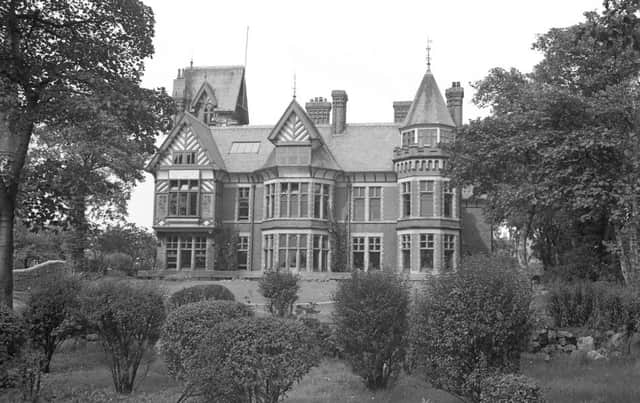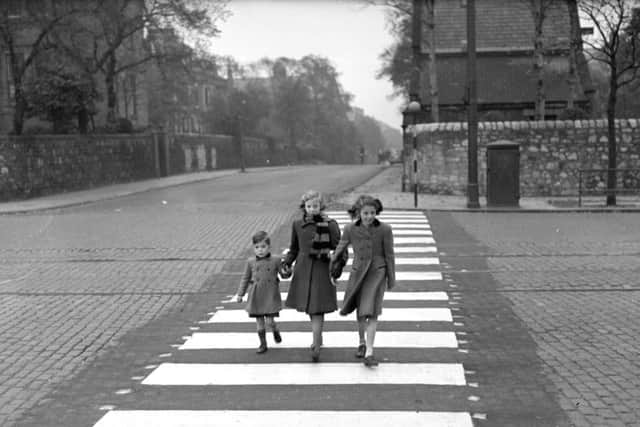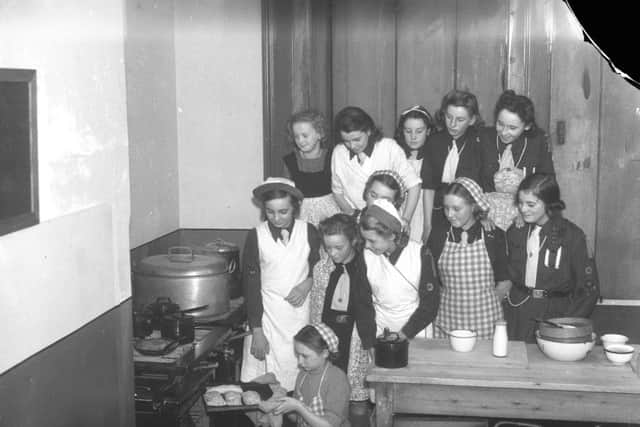Sunderland High School - the school that pioneered education for girls


Generations of girls were given the chance to train as doctors, lawyers, accountants and dentists - thanks to the pioneering education offered by Sunderland High School.
Indeed, many even won places at top universities such as Oxford and Cambridge before World War One - when higher education for women was virtually deemed unnecessary.


Advertisement
Hide AdAdvertisement
Hide Ad“The girls who have left our school have taken with them the ideals of service, a willingness to accept responsibility, cheerfulness and courtesy,” stated headmistress Miss C.M. Johnson in 1954.
“Our old girls hold positions of importance in many parts of the world. The school can also claim to have produced the first woman average adjuster in marine insurance.”
The roots of Sunderland High School (SHS) date to December 1883, when influential townsfolk - including the Rector of Bishopwearmouth - met to discuss the need to create two “higher education” independent schools in Sunderland.
This discussion was followed by a meeting on January 7, 1884 - with the Bishop of Durham presiding - when separate High Schools for boys and girls were formally given the go-ahead.


Advertisement
Hide AdAdvertisement
Hide AdThe rector of Bishopwearmouth, Archdeacon Long, officially opened the new High School for Girls at 10-11 Park Terrace (now Toward Road) on April 29, 1881, with Mayor J.W. Wayman in attendance.
“It had been felt that a great want existed in this town with regard to high schools both for boys and girls and, no sooner was the subject mentioned, than everybody seemed willing to afford it support,” the Mayor told the gathered crowd.
“I believe the school will be a very important feature in the future of Sunderland. It will raise the tone of education in the town. I wish the scheme every possible success and hope we might always remember with pleasure the establishment of a High School.”
The school was opened with support from the Church Schools Company, headed by the Archbishop of Canterbury, with the aim of offering a higher form of education for children.


Advertisement
Hide AdAdvertisement
Hide AdA High School for Boys was opened later the same year but, prior to going coeducational in 1988, Sunderland High School for Girls held the record as the oldest girls’ school in the city.
Just 16 full-time students were enrolled at SHS when it first opened but, as interest in the school gained momentum, so the need for extra space soon became apparent.
A fund-raising drive helped provide funds for a new school building and, in 1887, the foundation stone was laid by the Dowager Marchioness of Londonderry. It opened in 1884.
A further extension followed in 1914, when Bishopwearmouth Rectory in Gray Road was purchased for use as a preparatory school. It also housed boarders - both teachers and pupils - for several years.


Advertisement
Hide AdAdvertisement
Hide AdAn Old Girls Association soon blossomed, helping to raise funds for the school and, in 1927, members joined forces to raise £1,035 to launch a University Scholarship Fund.
“For many years the school has been represented at the older universities. Five girls were at Oxford together at one time and three at Cambridge,” said head Miss E.M. Ironside in 1934.
The Golden Jubilee celebrations of 1934 saw an appeal launched for funds to build a new gymnasium - with Sir John Priestman donating £500 towards the good cause.
And, in 1946, the school converted Hendon Hill House into a new prep school, while the four acres of grounds were laid out with games pitches, eight tennis courts and a pavilion.
Advertisement
Hide AdAdvertisement
Hide AdSHS continued to grow during the 1950s and 60s, investing heavily in science. A new building was also opened in the 1980s, as the school celebrated its 100th birthday.
But, the centenary anniversary marked the dawn of a new era too. In 1988 the sixth form was opened to boys and, in 1992, SHS merged with Tonstall School - making it fully coeducational.
The 132-year-old history of the school hasn’t however, been forgotten - as the site contains some of the most historic buildings in Sunderland, including Langham Tower.
“The tower is one of Wearside’s greatest architectural treasures,” said architectural historian, and university lecturer, Dr Michael Johnson.
“The design was based on Cragside – Lord Armstrong’s mansion in Northumberland - and it was built in 1889 for oil and ships’ provisions trader William Adamson.”